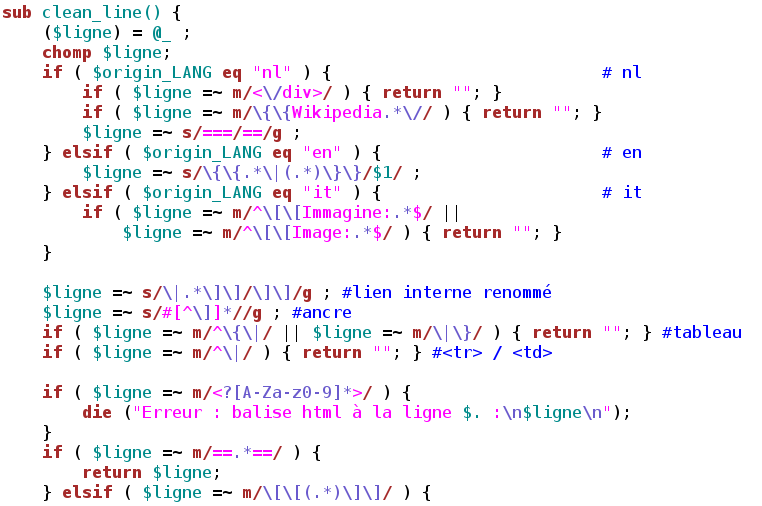Perl
WHAT IS PERL?
- Perl is a high-level programming language that was developed by Larry Wall in the late 1980s.
- It is a versatile and widely used language known for its strong text processing capabilities and its ability to handle complex tasks with minimal code.
- Perl stands for “Practical Extraction and Reporting Language,” reflecting its origins as a language for processing text and generating reports.
- Perl is a general-purpose programming language that can be used for a wide range of tasks, including system administration, web development, database programming, networking, and more.

USE OF PERL
Perl’s strong text processing capabilities make it an excellent choice for tasks involving data manipulation, extraction, and reporting. It is widely used for tasks such as parsing log files, processing large datasets, generating reports, and automating repetitive tasks.
Perl has been used extensively in web development, particularly in the early days of the internet. It is well-suited for server-side scripting, form handling, and generating dynamic web content. Perl’s CGI (Common Gateway Interface) programming interface allows it to interact with web servers and generate HTML dynamically.
Perl is commonly used for system administration tasks due to its ability to interact with operating system features and APIs. It is used for tasks like file manipulation, directory operations, process management, system monitoring, and automation of administrative tasks. Perl’s extensive library of modules provides convenient interfaces for system-level operations.
Perl’s networking capabilities make it suitable for network programming tasks, such as socket programming, client-server communication, and network protocol development. It can be used for creating network tools, automating network tasks, and building network applications.
WHAT ARE THE FEATURES OF PERL?
Text Processing – Perl excels in text processing and manipulation tasks. It provides extensive support for regular expressions, making it easy to search, match, and replace patterns within strings or files. Perl’s built-in functions and operators for string handling, pattern matching, and text manipulation make it efficient for processing and analyzing textual data.
Versatility – Perl is known for its versatility and flexibility. It supports multiple programming paradigms, including procedural, object-oriented, and functional programming styles. This flexibility allows developers to choose the best approach for their programming needs and easily adapt Perl to different project requirements.


Extensive Library Support – Perl has a rich ecosystem of modules and libraries available through the Comprehensive Perl Archive Network (CPAN). CPAN hosts thousands of ready-to-use modules that provide additional functionality and features. These modules cover a wide range of domains, including database connectivity, web development, XML processing, networking, and more. The extensive library support saves development time and allows developers to leverage existing solutions.
Regular Expressions – Perl has built-in support for powerful regular expressions. Regular expressions in Perl offer advanced pattern matching capabilities, allowing developers to search, extract, and manipulate text based on complex patterns. This feature is particularly useful in tasks such as data validation, text parsing, and pattern matching.
THE BENEFITS OF LEARNING TO CODE WITH PERL
Versatility – Perl’s versatility allows you to solve a wide range of programming tasks. Whether it’s text processing, system administration, web development, or network programming, Perl provides the tools and libraries to tackle diverse programming challenges. This versatility makes Perl a valuable skill to have in your programming toolkit.
Text Processing Power – Perl is renowned for its text processing capabilities. With its built-in regular expression support and string manipulation functions, Perl excels at tasks like parsing and manipulating text files, data extraction, and pattern matching. If you’re working with large amounts of textual data, Perl can significantly streamline your processing tasks.
Strong Community and Library Support – Perl has a thriving community and a vast collection of modules and libraries available through CPAN. The community provides support, resources, and a wealth of ready-to-use solutions that can save you time and effort. The extensive library ecosystem ensures that you have access to tools and modules for various purposes, allowing you to leverage existing solutions and build upon them.
Scripting and Automation – Perl’s concise and expressive syntax, combined with its powerful text processing capabilities, makes it an ideal choice for scripting and automation tasks. Whether it’s writing scripts to automate repetitive tasks, managing system administration tasks, or creating command-line utilities, Perl can significantly boost your productivity.
